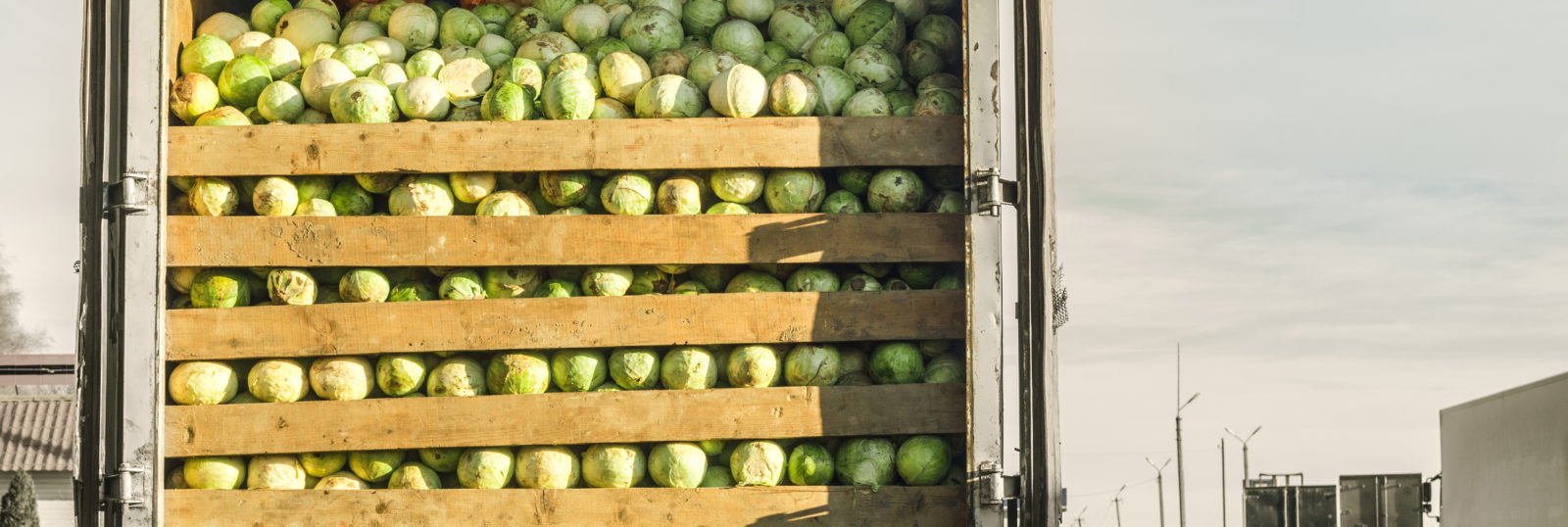Chicken nuggets have become an American favorite with adults and children alike. Tyson Foods, Cargill Meat Solutions, and Perdue Farms are responsible for half the chicken production in the United States, primarily using contract farming. In 2007, Georgia alone produced 204,868,242 million chickens.1 It stands to reason, then, that if you’re in Georgia—say, in one of its top chicken producing counties, Franklin—you would expect that the chicken nuggets you eat there would be locally sourced. However, in 2014, the United States Department of Agriculture gave the okay for US chickens to be sent to China for processing—think chicken soup, chicken nuggets—and then sent back to the US for consumption. That’s a 14,000+ mile round trip for chicken and no label required to let consumers know where their chicken was processed.
Sound ridiculous? International food trade is growing more rapidly than food production or population. Between 1968 and 1998, world food production increased by 84 percent and the population by 91 percent, but food trade increased by a whopping 184 percent! It is estimated that the typical American prepared meal contains food items from at least five countries, not including the United States.2
Knowing where your food comes from is becoming increasingly difficult. At the end of 2015, Congress repealed the Country of Origin Labeling (COOL) requirements for beef and pork products.3 Seafood, too, is notoriously mislabeled, with as many as one in three fish sold in restaurants and grocery stores incorrectly identifying the fish’s origin even species!4 Yep, from meat and poultry to produce and processed foods, there are important health and environmental implications of your food’s origins.
Food Safety
International food production and processing raises several food safety concerns. The Centers for Disease Control and Prevention estimate that one in six Americans get food poisoning each year, including 128,000 hospitalizations and 3,000 fatalities. While the US has one of the safest food supplies in the world, not all the countries that export food to the US have the same level of safety standards. According to the Food and Drug Administration, 20 percent of our fresh vegetables, 50 percent of fresh fruit, and 80 percent of seafood is imported. It is very possible for an outbreak of food poisoning across the world to make its way into our food supply. Here are several food safety scandals from China:
- More than 300,00 Chinese children were poisoned, resulting in some deaths, from melamine-tainted milk powder. (Melamine is an organic base chemical that is rich in nitrogen. In this case, the manufacturer had added water and melamine to the product to increase volume.)5
- In 2007, a large number of US dogs and cats died from kidney failure due to melamine-tainted pet food produced in China.6
- Dangerously high levels of mercury have been found in Chinese baby formula.6
- More than $1 million worth of “lamb” sold to Chinese consumers was actually rat and other small mammals.6
- Meat traders sold tons of beef, pork, and chicken wings that had been frozen for 40 years.7
Environmental Impact
This long-distance, large-scale transportation of food consumes large amounts of fossil fuels and contributes to global warming. Not only is the distance from farm to table important, but the modes of transport also have a large effect on how much pollution is generated. Airplanes generate fifty times more carbon dioxide— a greenhouse gas— than do ships. However, sea shipping is slow and food is increasing being shipped by air to keep up with our increasing demand for fresh food. Check out the table below for a list of foods that are frequently shipped by air.8
|
Foods Frequently Imported by Air |
Main Country of Origin |
|
Asparagus |
Peru |
|
Bell Peppers |
Netherlands |
|
Blackberries |
Chile |
|
Blueberries |
Chile, New Zealand, Argentina |
|
Cherries |
Chile |
|
Raspberries |
Chile |
What You Can Do
The number one thing you can do is purchase local food. Surveys have shown that a typical meal— comprised of meat, fruits, vegetables, and grains—that uses local ingredients requires four to seventeen times less petroleum in transport than does the same meal produced by the global food chain.9 Supporting local food systems not only reduces fuel consumption and global warming pollution associated with transporting food, it promotes sustainability, protects our health, the health of our environment and communities, and helps to stimulate local economies.
You can support local food systems by shopping at farmer’s markets, choosing local produce when it’s in season at the grocery store, maintaining a home garden, reducing purchases of produce that has been transported by airplanes, joining a community supported agriculture or other cooperative, visiting other direct-to-consumer programs, such as farm stands, and encouraging businesses and government bodies to adopt procurement policies favoring locally grown, organic and sustainably harvested foods. Supporting local food systems doesn’t have to mean never eating imported food, it just means starting with what is fresh, local, and in season.
More than just good for the health of you and your family, knowing where you food comes from is, to paraphrase food expert and author Anna Lappe, a vote cast for the kind of world you want to live in.
References
- 1.http://www.factoryfarmmap.org/wp-content/uploads/2010/11/FactoryFarmNation-web.pdf
- https://food-hub.org/files/resources/Food%20Miles.pdf
- http://www.foodsafetynews.com/2015/12/usda-ends-cool-enforcement-with-presidents-signature-on-omnibus-bill/#.VxKDCBMrJE5
- http://www.npr.org/sections/thesalt/2013/02/21/172589997/one-in-three-fish-sold-at-restaurants-and-grocery-stores-is-mislabeled
- http://www.who.int/csr/media/faq/QAmelamine/en/
- http://www.foodsafetynews.com/2014/03/chicken-from-china-your-seafood-is-already-being-processed-there/#.VxKENxMrJE5
- http://www.nytimes.com/2015/06/25/world/in-china-stomachs-turn-at-news-of-traders-peddling-40-year-old-meat.html?_r=0
- https://food-hub.org/files/resources/Food%20Miles.pdf
- http://www.worldwatch.org/globetrotting-food-will-travel-farther-ever-thanksgiving

